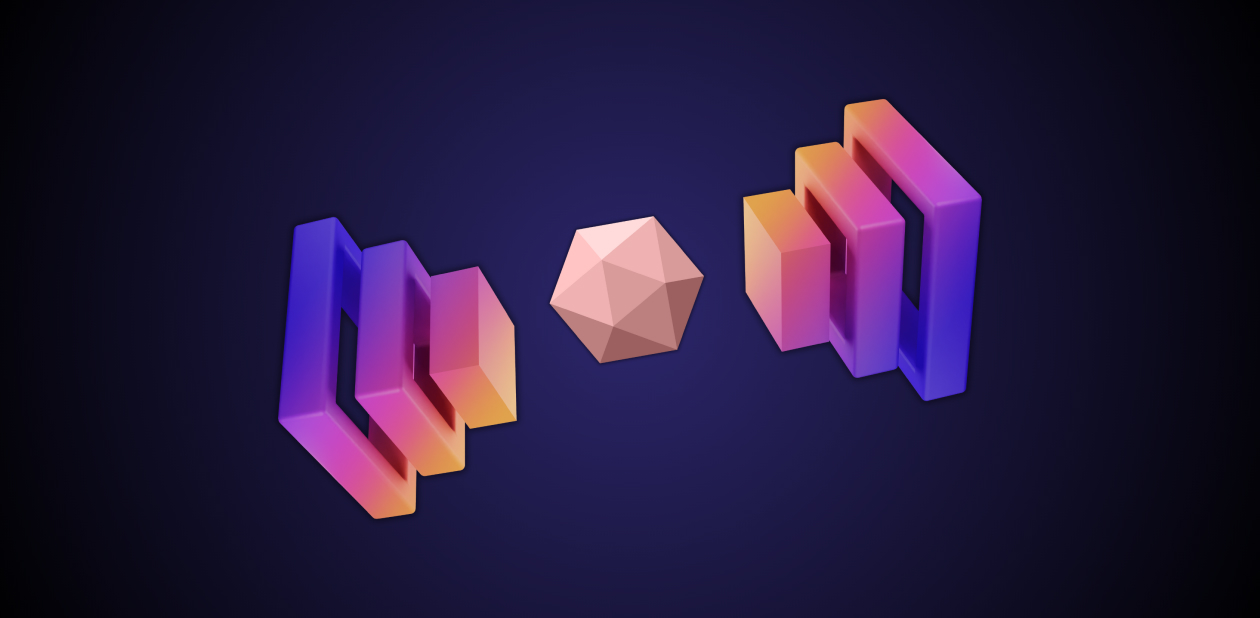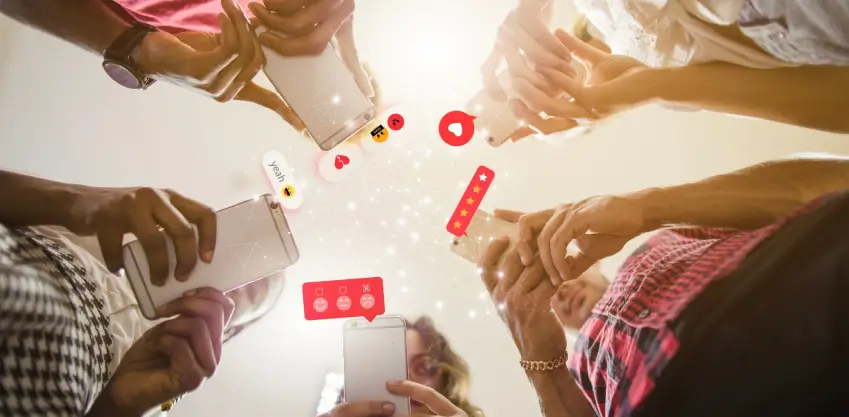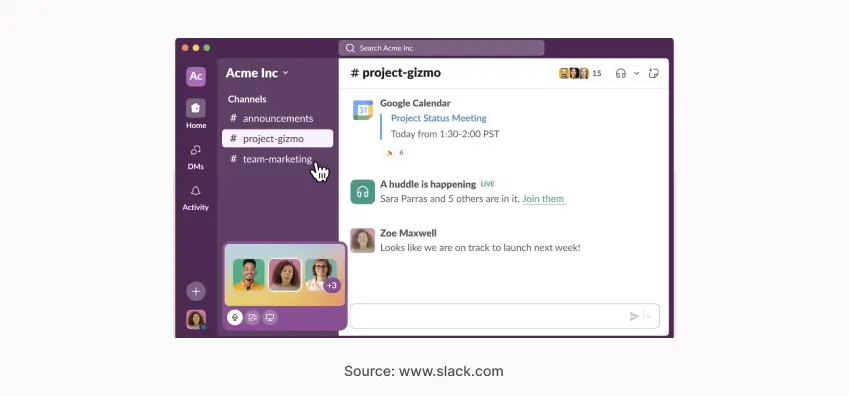The Power of Minimalism in Product Design
- | 7 minute readProduct Design


In the bustling tech and SaaS sector, where choice overload and feature creep can overwhelm users, the philosophy of minimalism in product design stands out as a lifeline to clarity and simplicity.
This approach isn’t just merely about aesthetic appeal. Moreover, it’s a strategic focus on user needs, ensuring an intuitive and frictionless experience.
In this deep dive, we’ll explore how blending aesthetics with functionality through minimalism can be a game-changer for startup leaders like you.
Ready to find out how less can indeed be more? Let’s get started.
Minimalism is more than a design trend; it’s a fundamental philosophy that emphasizes the ‘less is more’ approach.
Drawing inspiration from the Japanese concept of Ma, which values the role of space in design, minimalism in product design is about stripping back to essentials. You can call it a strategy that not only cleans up space but also clears the way for a focused user experience.
Tracing its roots back to the post-WWII art scene, particularly within American visual arts, minimalism has evolved to influence various design disciplines, including product design.
The ethos, famously encapsulated by Dieter Rams’ principle, “Good design is as little design as possible,” champions simplicity and functionality, setting the stage for products designed with purpose and clarity.
In a world where users are bombarded with choices and information, minimalism offers a breath of fresh air.
It simplifies user interaction, enabling a focus on core product functionality, which is particularly beneficial in the complex landscape of tech and SaaS products.
Let’s delve into why embracing minimalism could be your smartest move yet.
Here’s a deeper dive into how minimalist design can be the game-changer for your tech/SaaS product.

The initiation into the minimalist design philosophy begins with its remarkable impact on user engagement—a critical metric in the digital age.
Imagine entering a space where clarity prevails, and confusion dissipates.
This is the realm minimalist design crafts for your users, offering them a sanctuary of simplicity amid the digital chaos.
By presenting a clean, intuitive interface, minimalism acts as a magnet for user attention, not just drawing them in but holding them captivated. It’s about creating an environment where users can navigate with ease, fostering a deeper connection with your product.
Through simplification, minimalist design enhances user engagement, turning casual visitors into committed users who appreciate the straightforwardness and directness of their interactions with your technology.
Minimalism is the art of focusing on what truly matters by stripping away the non-essential, and in the process, it redefines product efficiency.
This approach doesn’t stop at improving the visual appeal; it dives deep into the very core of your product’s functionality.
By emphasizing the essential features and eliminating the clutter, minimalist design sharpens the focus of your product, making every element intentional and every interaction meaningful.
This lean methodology doesn’t just beautify your product; it amplifies its functionality, leading to a more intuitive and seamless user experience.
Each design decision, guided by minimalism, is a step towards a product that resonates with users for its clarity and effectiveness, proving that in the economy of design, less is indeed more.
In the landscape of tech and SaaS, where user needs and market trends evolve at lightning speed, the adaptability and scalability of your product are non-negotiable. Here, minimalist design shines as a beacon of flexibility, offering a blueprint for growth that is both sustainable and agile.
With its preference for simplicity over complexity, minimalist design ensures that your product structure is robust yet flexible, ready to adapt to new challenges without losing its core identity.
This design philosophy enables startups to pivot with precision, ensuring that scalability doesn’t come at the cost of usability or aesthetic integrity. Whether it’s adding new features or refining existing ones, a minimalist approach ensures that your product remains relevant, responsive, and resilient in the face of change.

Dropbox, a leading cloud storage service, exemplifies minimalism in its product design.
By focusing on core functionalities such as file storage, sharing, and collaboration, Dropbox presents a clean, intuitive interface that prioritizes usability and simplicity.
This approach has not only made it easier for users to navigate the platform but has also solidified Dropbox’s position as a user-friendly service in the competitive cloud storage market.

Slack, the widely used communication platform for teams, leverages minimalism to enhance productivity and collaboration.
Its design focuses on simplicity and efficiency, with a straightforward interface that minimizes distractions.
Slack’s success in creating a seamless experience for team communication underscores the effectiveness of minimalism in designing products that meet users’ needs without unnecessary complexity.
Consider minimalism in product design a deliberate approach to creating user-centric products, rather than just an aesthetic choice.
Here are practical steps to effectively integrate minimalism into your design process.
The first step in adopting a minimalist design is to identify the core functionalities of your product.
What are the essential features that your users need?
This step involves stripping down the product to its bare essentials and ensuring that each remaining element serves a distinct purpose. It’s basically understanding the primary objectives of your users and aligning your design to meet those needs efficiently.
White space, or negative space, is a critical element in minimalist design. Not to be mistaken with it being just an empty space; it’s a powerful tool for highlighting important content and guiding the user’s focus.
Effective use of white space can drastically improve readability and user comprehension. When designing, ensure that the layout allows for ample white space to create a clean, uncluttered interface.
Simplification is key in minimalist design.
Review each user interface element and ask if it can be made simpler. This could mean reducing the number of buttons, using more intuitive icons, or streamlining navigation.
The goal is to make the user’s journey through your product as straightforward and uncomplicated as possible.
Consistency in design elements like color schemes, typography, and button styles is vital. It not only reinforces your brand identity but also makes the interface more predictable and easier to use.
An intuitive design means users should be able to navigate through your product effortlessly, without requiring extensive instructions or guidance.
Implementing minimalism is an iterative process.
Regularly test your design with real users to gather feedback. Pay attention to how they interact with your product and what obstacles they encounter. Use this feedback to refine and simplify your design further.
Always remember, minimalism is not about achieving simplicity in one go; it’s a continuous process of improvement and refinement.
As we look ahead, minimalist product design is set to take user interactions to new levels of simplicity.
The focus will be on creating experiences where every tap, swipe, and click delivers maximum value with minimum effort.
Expect to see a rise in micro-interactions—small, engaging touches that enhance the user’s experience without overwhelming them. These subtle features can make a product feel more intuitive and alive, offering feedback and guidance in the most unobtrusive way possible.
Artificial Intelligence (AI) and automation technologies would be playing a significant role in further streamlining design processes. By automating repetitive tasks and analyzing user data, AI can assist designers in creating more personalized, user-centric designs.
The future of minimalism lies in designs that are not just simple but smartly tailored to individual user needs, making each interaction more meaningful.
Augmented Reality (AR) offers a unique avenue for minimalist design by allowing users to interact with digital elements superimposed on the real world in a straightforward and intuitive manner.
This technology can reduce the need for physical buttons and screens, leading to cleaner, more immersive user experiences.
As AR technology becomes more accessible, its integration into minimalist design will further blur the lines between digital and physical, providing users with seamless, engaging experiences.

Voice User Interfaces (VUIs) represent the ultimate in minimalist design—removing visual elements entirely in favor of voice commands. As VUI technology matures, it will become an increasingly integral part of minimalist product design, offering users a hands-free, visually uncluttered way to interact with technology.
The challenge for designers will be to ensure these voice interactions are as intuitive and straightforward as their graphical counterparts.
Adopting minimalism in product design is more than just a creative decision; it’s infact a strategic business move. Here’s how minimalism aligns with and supports business objectives.
Minimalist design directly contributes to clearer brand messaging and stronger user engagement, essential elements for business growth.
By simplifying the user interface, startups can more effectively communicate their core value proposition. This clarity in communication helps in attracting and retaining the right audience, thereby improving conversion rates and customer loyalty.
A minimalist approach also elevates a brand’s perception. It positions a startup as modern, efficient, and user-focused. This perception is invaluable in competitive tech and SaaS markets, where users often equate the quality of design with the quality of the product itself.
By embracing minimalism, startups can differentiate themselves, creating a unique identity that resonates with their target audience.
From a practical standpoint, minimalist design can be more cost-effective and agile.
Simplified designs are generally quicker to develop and easier to adapt, allowing startups to respond rapidly to market changes or user feedback. This agility is crucial for maintaining a competitive edge in the fast-paced tech sector.
Wrapping up, it’s clear that minimalism in product design is much more than a stylistic choice—it’s a comprehensive strategy that enhances user experience, aligns with business objectives, and sets the foundation for a strong brand identity in the tech and SaaS industries.
By focusing on simplicity, functionality, and user-centric principles, tech and SaaS startups can craft products that not only meet but exceed user expectations.
If you’re looking to infuse your product’s design with clarity and efficiency, CompileCrew can help you. Connect with us to explore how we can apply minimalist principles to elevate your product and achieve your business objectives!

Sheena is a growth hacker at CompileCrew. She loves everything about technology and startups. When she’s not in strategy mode, you’ll find her recharging with some rock and metal music.